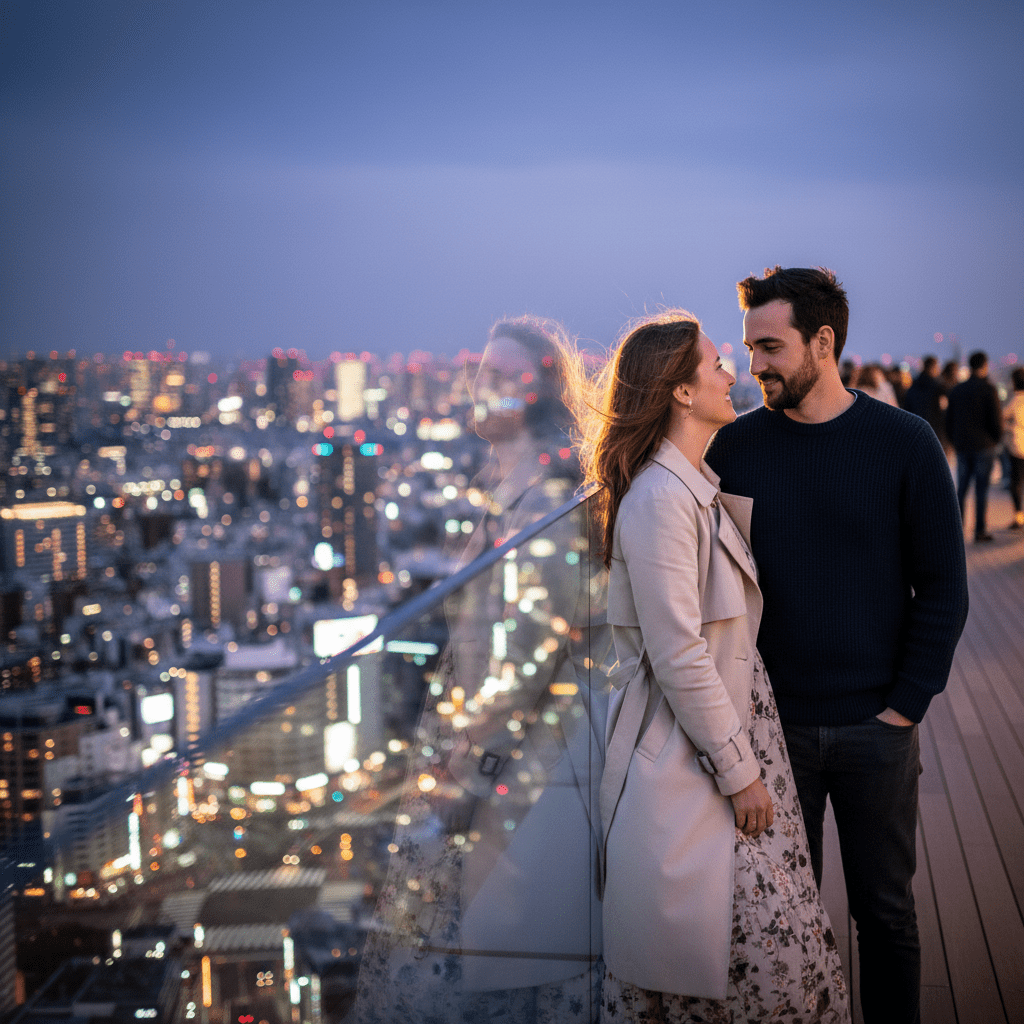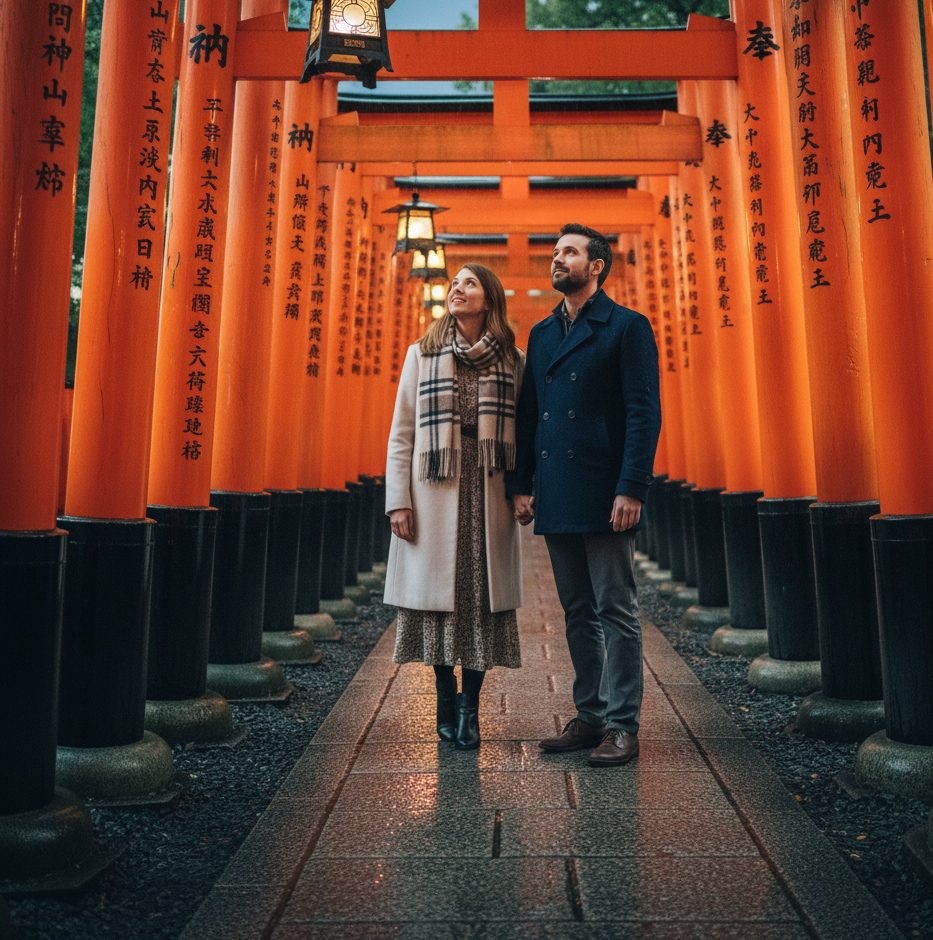A Romantic Japan Honeymoon Itinerary
We landed in Tokyo the way you land in a dream—jet-lagged, slightly dizzy, and giddy in that “we just got married” way that makes the whole world feel like a private joke. I’m Olivia, and this is the story of how Mark and I spent our first two weeks of marriage collecting quiet moments in the noisiest, most beautiful ways Japan could offer.
On our first evening we walked to Senso-ji. Lanterns swung in a light breeze, Nakamise-dori rustled like a silk curtain, and somewhere a shutter clicked. We stopped at the incense burner, let the smoke wash over our shoulders for luck, and looked at each other like two conspirators who’d made it to the other side of a long, joyful heist.
The next day, we booked sunset slots for Shibuya Sky. Everyone says it’s touristy; everyone is right. But the city from up there looks like a sea learning to stand. Buildings kept rising and rising until they turned into a horizon, and then into a kind of promise. When the lights came on and the crossing below began its choreographed chaos, Mark squeezed my hand and said, “If marriage had a screensaver, this would be it.”
Tokyo taught us a lesson early: in a city that big, pick one small thing to love each day. A bowl of shoyu ramen at a counter with six seats. The steam on a winter window. Two high schoolers practicing dance steps in the reflection of a shopfront. When we found those, the rush melted into something like belonging.

Before leaving Tokyo we took the train to Kawagoe, the “Little Edo” town. We ate sweet potatoes five ways (croquette was the champion), bought a lucky charm at Hikawa Shrine, and watched the light turn syrupy on the bell tower. It felt like a soft rehearsal for Kyoto—history at walking pace, stories you can hear if you lean in.
Kyoto is a city that meets you halfway. It won’t beg for attention; it will simply glow until you notice. We stayed in Gion, where alleyways look like brush strokes and wooden facades hold their breath. At dawn we climbed toward Kiyomizu-dera, the streets empty except for a delivery scooter and a cat that owned the block. On the temple stage, the city lay open like a map we could read with our fingers.
Later, we wandered Kennin-ji—tatami rooms like pages, two ink dragons on the ceiling mid-argument. In Kodai-ji we found a pocket bamboo grove with no crowd at all, a cool green hush that felt like an invitation. Travel sometimes yells. Kyoto whispers. We learned to match its volume.
One evening we walked along Shirakawa-minami-dori, the canal catching the last gold of the day. A maiko slipped by, a calendar page moving. We didn’t raise our phones. Not every beauty is ours to keep.

We almost skipped Nara. I’m so glad we didn’t. The deer were shameless charmers, bowing for biscuits and photobombing with monk-like patience. But it was the climb to Nigatsu-do that I remember—the view of roofs and trees, the temple balcony creaking like an old ship. Mark leaned on the railing and said, “Promise me we’ll grow old with the same kind of creak.” I said yes, of course, yes.
Everyone told us Mt Fuji hides behind clouds like a celebrity. We set alarms for ungodly o’clock anyway. At first light, we padded to the window of our little hotel near the station—and there she was, crisp and impossible, like someone had sharpened the air. We walked to the Urui River, cherry branches bare but elegant, and watched Fuji shift from lavender to white-blue as if the mountain were waking up with us.
Later, on a small food walk, we learned that local soba tastes different because of the water; that sake can be clean and soft at once; that the shrine stones hold stories you feel through your soles. We bought a tiny ceramic fox we didn’t need. We decided we needed it very much.
Honeymoons aren’t only sunsets and poetry. They’re also train times, wrong exits, the comedy of two people trying to understand a vending machine together. We bought individual Shinkansen tickets instead of a rail pass, used Suica for everything else, and learned that the best bento is the one you eat on the platform because the train you wanted just left and the next one is in eight minutes.
There was a small victory in every small thing done well. “We are good at this,” Mark said after we navigated three platforms and a monorail. “At marriage?” I asked. “At snacks,” he said, and then, softer, “and marriage, yes.”

Shibuya Sky (timed entry): about ¥2,200 per person.
Tokyo → Kyoto on Nozomi (unreserved seats not valid on JR Pass): ~¥14,000 pp; Hikari is slightly slower and Pass-friendly.
Kyoto bus/subway day pass: ~¥900—worth it if you stack sights.
Fujinomiya food tour: expect ¥6,000–¥9,000 pp depending on inclusions.
Mid-range boutique hotels: ¥14,000–¥22,000 ללילה לזוג (טווח אמיתי ונוח).
Street-food dinner for two: ¥1,500–¥3,000, תלוי בכמה אתם רעבים ובכמה טאקויאקי נכנעים להם.
On our last night, we returned to Asakusa. The temple grounds had softened into that hour when even neon seems to sigh. We stood near the incense again, the smoke warm and faintly sweet. Mark pulled a tiny envelope from his coat—a wish paper we’d bought in Kyoto and forgotten. “Write one,” he said. I wrote “more beginnings.” He wrote “bravery, softly.”
We didn’t tie them anywhere sacred or cinematic. We folded them back into the envelope and into my wallet, two small promises traveling home with us.
What I learned in Japan is that romance isn’t the big view alone; it’s the bench you sit on to share it, the coin you drop exactly when a shrine bell rings, the quiet you learn to keep together. It’s the way a city of millions makes room for two.
When people ask if Japan is a good honeymoon, I think of the early trains and the late walks, of vending machines lit like little chapels, of Fuji appearing as if to say, “yes, now.” I think of the taste of warm tea on a cold Kyoto morning and of Mark’s hand finding mine without looking.
And I think of this: love is a skill as much as a feeling. Japan, with all her rhythms and rituals, gave us places to practice.
We flew home with more than photos. We came back with an ease that hadn’t been there before, a rhythm we could hear even when the plane wheels touched down. Somewhere between neon and moonlight, the honeymoon became a beginning—exactly what we asked for in smoke and ink.
We use cookies to improve your experience on our site. By using our site, you consent to cookies.
Manage your cookie preferences below:
Essential cookies enable basic functions and are necessary for the proper function of the website.
You can find more information in our Cookie Policy.